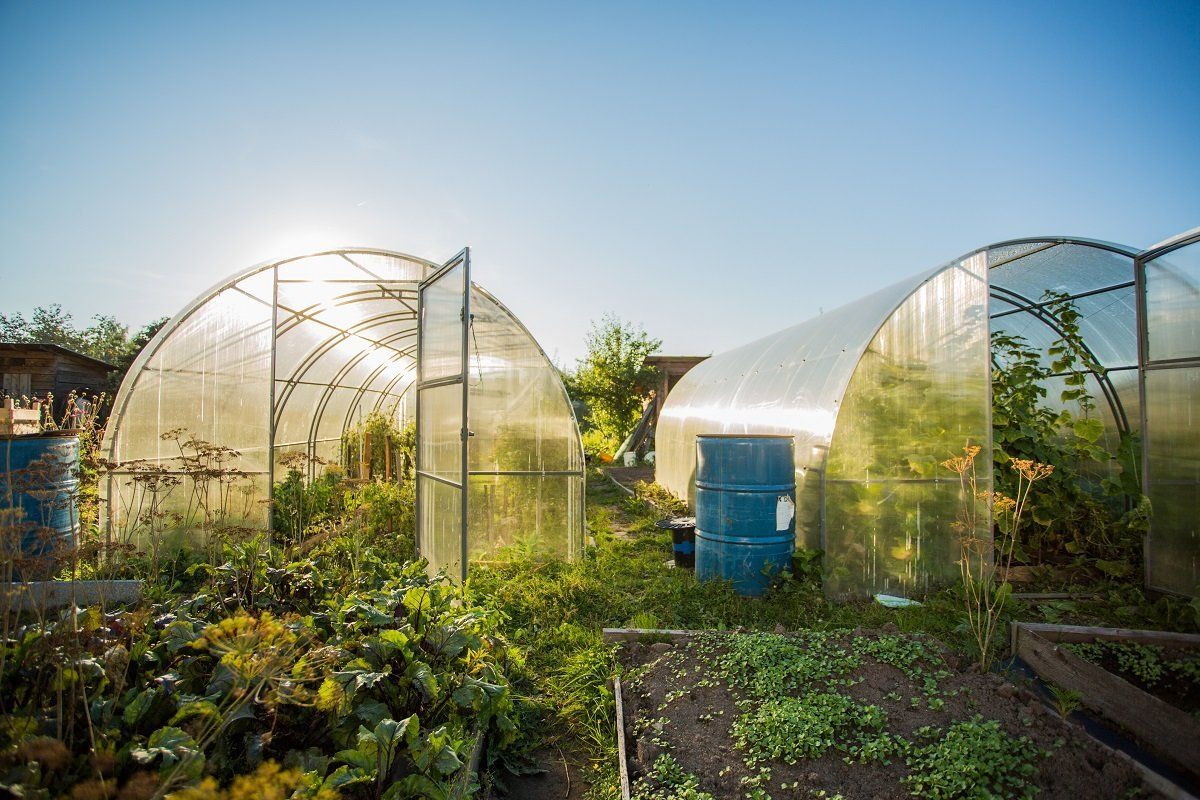What Crops Are Grown in Greenhouses? A Complete Guide to Choosing Plants for Protected Soil

Greenhouse cultivation is an opportunity to harvest crops all year round, protecting plants from adverse weather conditions, pests and diseases. However, not all crops are suitable for greenhouses. Which plants feel best in closed ground? How to choose the best crops for greenhouse cultivation, given its size, microclimate and seasonality? Let's look into the details.
Vegetable crops for greenhouses
Vegetables are the basis of greenhouse farming. But which vegetable crops are best suited for closed soil, and why? Let's look at them in detail.
Heat-loving vegetables
These crops require high temperatures and humidity, making a greenhouse an ideal environment for growing them.
- Tomatoes – allow you to harvest almost all year round. However, it is important to take into account the varietal characteristics. Indeterminate varieties (De Barao, Chio-Chio-San), which form long vines and bear fruit continuously, are best suited for greenhouses. They require strong supports, regular garters and removal of side shoots. Determinate varieties (Pink Honey, Blagovest F1) have limited growth and are suitable for compact greenhouses.
- Comparison: Indeterminate varieties produce a longer harvest, but require more space and care. Determinate varieties are easier to grow, but their fruiting is limited in time.
- Advice: Maintain the temperature within +20…+25°C and air humidity no more than 70% to avoid late blight.
- Cucumbers – need high humidity (70-80%) and good lighting. In greenhouses, it is better to grow parthenocarpic varieties (German F1, Masha F1), which do not require pollination.
- Comparison: Bee-pollinated varieties produce tastier fruits, but depend on insect pollinators. Parthenocarpic varieties are universal for closed greenhouses.
- Tip: Use vertical trellises to allow cucumbers to receive more light and take up less space.
- Pepper – requires a temperature of +22…+26°C and regular fertilizing. Large-fruited sweet varieties (Atlant, Bogatyr) and hot varieties (Jalapeño, Flame) are suitable for greenhouses.
- Comparison: Sweet peppers require more frequent watering and more nutritious soil, hot peppers are more resistant to stress and diseases.
- Tip: Loosen the soil regularly, as pepper roots need oxygen.
- Eggplants - very thermophilic, do not tolerate shade well. Low-growing varieties (Almaz, Helios) and tall hybrids (Black Beauty) grow well in greenhouses.
- Comparison: Low-growing varieties are suitable for small greenhouses, but produce fewer fruits. Tall varieties require tying, but are more productive.
- Tip: Eggplants do not tolerate drafts well, so do not place them near the entrance.
Vegetables for winter growing
In winter, cold-resistant crops can be grown in greenhouses:
- Radish – ripens quickly (20-30 days), tolerates cool temperatures well (+10…+15°C).
- Onion on a feather – unpretentious, grows even with minimal light.
- Spinach – can withstand temperatures up to +5°C, is resistant to short daylight hours.
- Leaf lettuce grows at +10…+15°C, but becomes bitter with excess moisture.
Comparison: Onions and spinach are easier to care for, while lettuce and radishes require more stable conditions.
Tip: Use phytolamps if there is not enough natural light in winter.
Berry crops for greenhouses
Strawberry
Strawberries can be grown all year round. The best varieties to grow in a greenhouse are remontant ones (Albion, Queen Elizabeth II), which bear fruit several times per season.
- Comparison: Regular varieties yield one harvest, but the berries are sweeter. Everbearing varieties allow harvesting until late autumn.
- Tip: Provide drip irrigation and artificial pollination.
Raspberry
Everbearing raspberries (Hercules, Bryanskoe Divo) bear fruit twice a season. It is important to prune the shoots in a timely manner.
- Comparison: Regular raspberries require less care, but bear fruit only in summer. Everbearing raspberries yield twice, but require more nutrition.
- Tip: Provide vertical trellises for easy harvesting.
Blueberries and cranberries
These crops require acidic soil (pH 4.5-5.5) and humidity 70-80%.
- Comparison: Blueberries are more demanding in care, but their berries are valued higher. Cranberries are resistant to cold, but require high humidity.
- Tip: Use peat substrate for blueberries.
Green crops and herbs
Greens are one of the most convenient options for greenhouse cultivation, as they grow quickly, take up little space and allow you to harvest even in winter. However, each crop has its own nuances of care.
Main green crops for greenhouse
- Parsley is a frost-resistant plant, it can withstand temperatures down to -5°C, and it grows even in low light. It can grow both in the ground and in containers. To obtain a richer taste and aroma, the soil should be rich in organic matter.
- Dill – requires a lot of light, otherwise it stretches out and loses its aroma. Ideal for winter growing, as it is cold-resistant. It is important to thin out the plantings regularly so that the greens remain juicy.
- Basil is extremely thermophilic, requires temperatures above +15°C, otherwise it slows down its growth. Prefers light, loose soils with good drainage. Humidity should be moderate - if over-watered, the roots begin to rot.
- Coriander – tolerates cool climates but requires good soil drainage. It is advisable to grow it in a separate section of the greenhouse, as its aroma can interfere with other plants.
Herbs for the greenhouse
In addition to classic green crops, the following can be grown in greenhouses:
- Mint – grows well in shady areas of the greenhouse, but requires regular pruning, otherwise it grows quickly.
- Thyme – prefers dry conditions, does not require frequent watering.
- Rosemary is slow growing but produces a valuable aroma and is drought tolerant.
- Tarragon is sensitive to over-watering and requires loose, sandy soil.
Comparison: Parsley and cilantro are ideal for cold frame greenhouses as they tolerate lower temperatures. Basil and dill require more heat and are suitable for heated greenhouses. Herbs such as rosemary and thyme require dry conditions and minimal care.
Tip: Alternate between greens and vegetables to make the most of the space, and trim leaves regularly to encourage new growth. For herbs, ensure good drainage to avoid waterlogging.
Selecting Plants for Protected Soil

The choice of crops for a greenhouse depends on the microclimate, growing goals and the gardener's preferences. It is important to consider:
- Temperature and humidity – heat-loving and cold-resistant plants require different conditions.
- Pollination system – some crops require artificial pollination.
- Soil nutrition – berry and vegetable crops require balanced fertilizing.
- Optimal watering – greens and herbs require different levels of humidity.
Want to create ideal conditions for growing plants? Greenhouses from NovaTeplitsa provide reliable protection, uniform microclimate and high yields. Check out the models on our website and start growing crops in comfortable conditions today!





